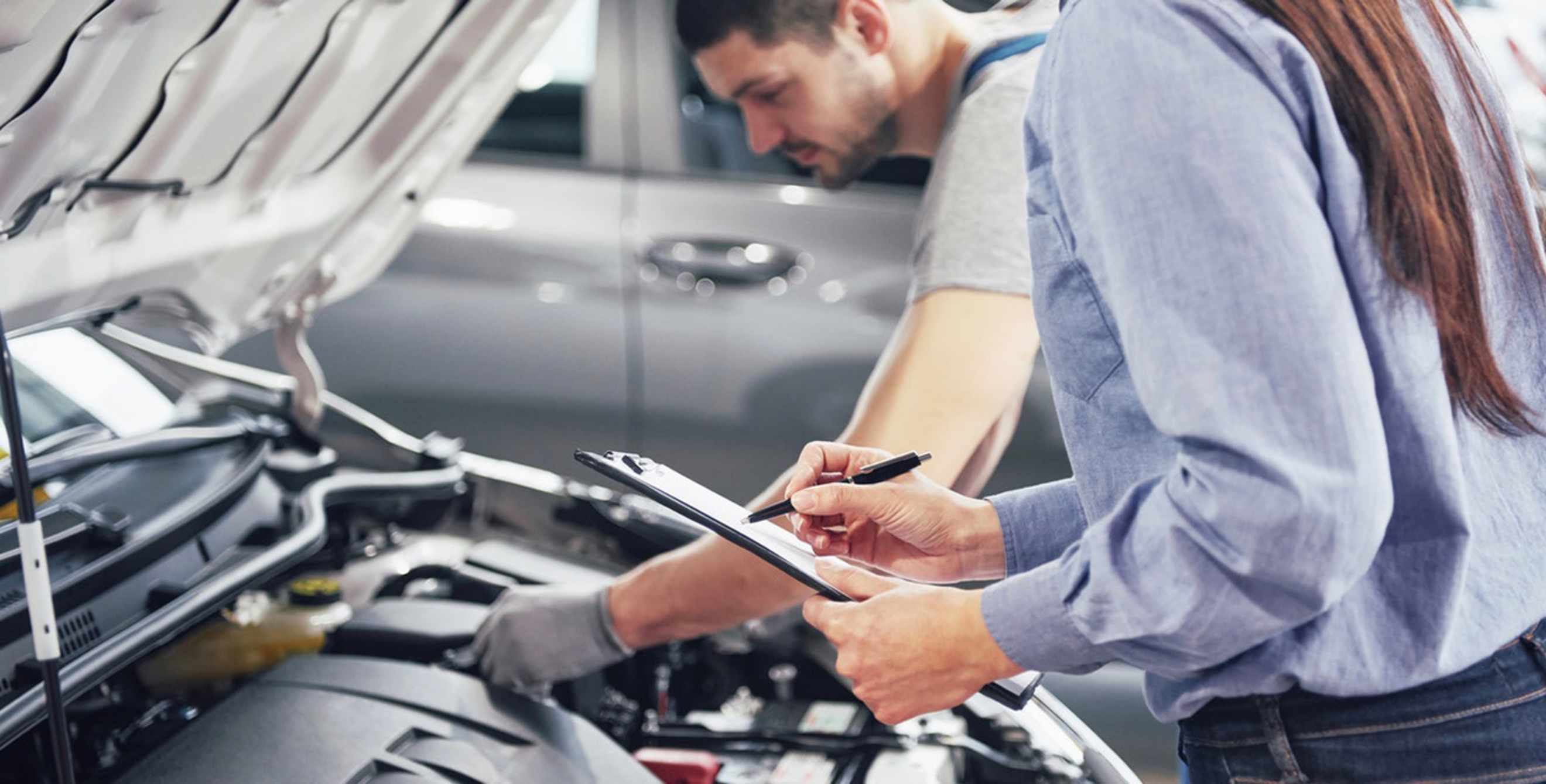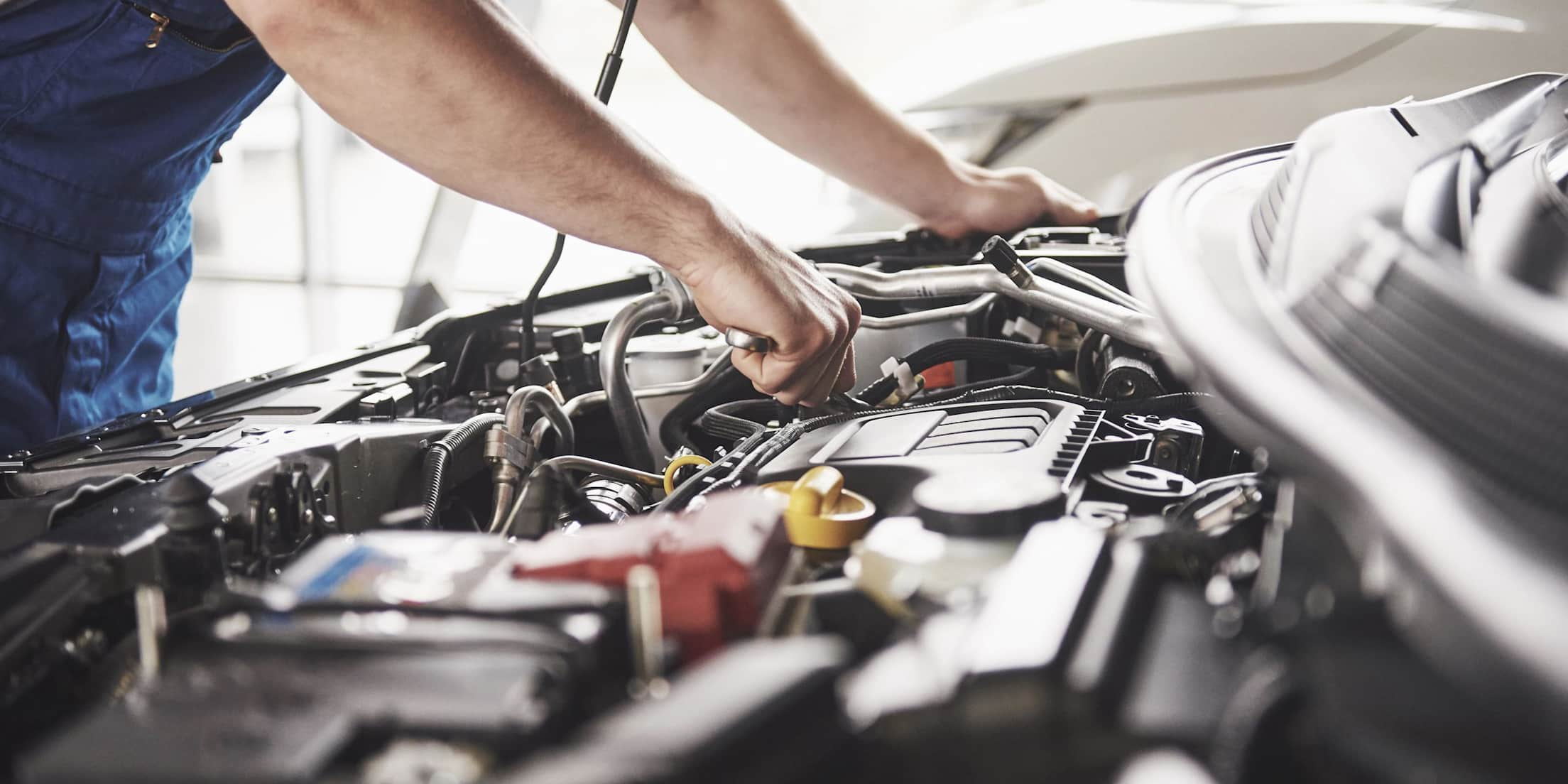
Car Maintenance Schedule: Everything You Need to Know
Prevent breakdowns and avoid unnecessary wear and tear with common-sense tips.

When was the last time you read through your car owner’s manual?
If it’s been awhile—say, since the day you drove your car off the lot—it’s a good idea to thumb through it again. Along with listing how to program your radio presets, your car manual contains important details on what needs to be serviced and maintained, and when it needs to get done.
“Right within the book it breaks down the maintenance and services,” says Todd Ehrsam, shop manager at Bullitt Automotive in Tempe, Arizona. Here’s why that’s important: Service requirements can vary significantly from one car make and model to another. Depending on your car, your service appointment may be at 5,000 miles—or 15,000.
Skipping service appointments can be inconvenient, dangerous, expensive, or all three. So grab that manual out of the glove box, and let’s break down the ins and outs of keeping your car in great shape.
When to Schedule Service Appointments
Typically, service appointments are scheduled either by time (how long it’s been since your last appointment) or miles (how many miles you’ve driven since your last appointment). The manual will tell you the specific time or mileage windows, and most new cars come equipped with dashboard alerts to jog your memory.
“Usually I recommend going by mileage versus time, because some people don’t drive as much as others,” says Kyle Lint, certified Toyota mechanic, Advanced Level Master Technician, and owner of Lint Automotive in California’s Orange County.
Whichever rubric you turn to, make these maintenance appointments a priority. “Regular service is the single most important thing you should do if you depend on your vehicle for work, pleasure, or really anything,” says Lint.
During the service appointment, your mechanic will work through the checklist provided by your manual. The newer your car—and the fewer miles it has—the less service it’ll require. For your car's first 30,000 to 60,000 miles, simple services suffice: oil changes, tire rotations, and other low-cost inspections and updates. With more miles, more involved servicing becomes necessary. Your 90,000-mile service is usually the first big one, says Lint, requiring spark plugs, transmission fluid, and axle fluid, as well as replacements for the cabin filters (if your car has them).
The specifics for your particular car are outlined in the manual, so take it with you to your appointment. Or, write down a list before you head into the mechanic’s shop. (Lost the manual? Just search online for a PDF version using your car’s make and model.)

A mechanic you trust will make all the difference when it comes to maintaining your car.
What About Your Mechanic’s Recommendations?
Sometimes your mechanic may make recommendations beyond what’s detailed in the owner’s manual. What then? While a trustworthy mechanic won’t advise you to get unnecessary services, it’s worth keeping in mind that there’s an incentive to tack on additional services once you’re in the shop (the more you get done, the more you’ll pay).
Use your judgment and ask lots of questions: If the car manual says engine coolant doesn’t need to be replaced yet, but your mechanic recommends it now, ask why the recommendation differs from the manual. It’s up to you to determine if this service makes sense or is an unnecessary up-sell.
Keep the conditions and geography of where you drive in mind. The wear and tear on a car driven daily on potholed city streets is different from a car subjected to sand and dust storms. One may require abundant tire upkeep and shock repair, while the other may necessitate more frequent air filter changes than recommended by the manual.
And, during a service appointment, your mechanic may spot something that needs repairing, notes Lint, like a cracked belt. “There are always things that can come up that the manual is not going to tell you, and that’s where it’s important to put your trust into who is checking your car, following their recommendations so you don’t get stranded on the side of the road,” he says.

If your mechanic makes an unexpected recommendation, it's okay to ask why.
What You Need to Know About Important Maintenance Tasks
You guessed it: Your owner’s manual will tell you when to do most basic tasks. Still, here’s some information on common, but important, to-dos to track on your own. In fact, Ehrsam says, you can check on the following items every time you fuel up if you’re so inclined.
How’s your oil? Change your oil per your owner’s manual instructions—more frequent changes are a waste of money. But do keep an eye on the engine oil levels and color between service appointments, recommends Ehrsam. Discoloration or low levels could indicate an engine malfunction. That’s true for your brake fluid, too.
What’s your tire pressure? Under- or over-inflated tires will wear out faster, and it's easy to check pressure levels at the gas station. Always inspect tire pressure before a long road trip, says Lint, who notes that if your car goes into the auto repair shop for anything (even a simple oil change), then legally the shop must check and top off your tire pressure. You can also check your tire tread using a tire tread gauge.
Are your windshield wipers still doing their job? Blades that leave behind a smear instead of clearing raindrops can be a serious safety hazard, obscuring visibility when road conditions are at their worst. Test out your blades to make sure they’re clean and crack-free before the start of the rainy season or winter. While you're at it, make sure your washer fluid is also sufficient (and don’t forget the back of the car if you have rear wipers!).
How to Find a Reputable Mechanic
Beyond sticking to a maintenance schedule, when it comes to the health of your car, there’s nothing more important than having a solid relationship with a service provider.
“Keeping your car serviced by a knowledgeable mechanic is important for making sure you stay safe out on the roads,” says Lint. But knowledge is only half the equation: You also need someone you can trust.
But how can you find that knowledgeable, trustworthy mechanic? Search by your zip code to locate a reliable AAA-Owned & Operated Repair Center or a AAA Approved Auto Repair Facility. Technicians at these shops are all factory-trained or possess ASE (Automotive Service Excellence) certification. As a AAA Member, you'll save 10 percent on labor costs, and receive a 24-month/24,000-mile extended warranty on all parts and work performed at a AAA Approved Auto Repair Facility.
Keep rolling with AAA Auto Services, offering everything from routine maintenance to emergency roadside assistance.